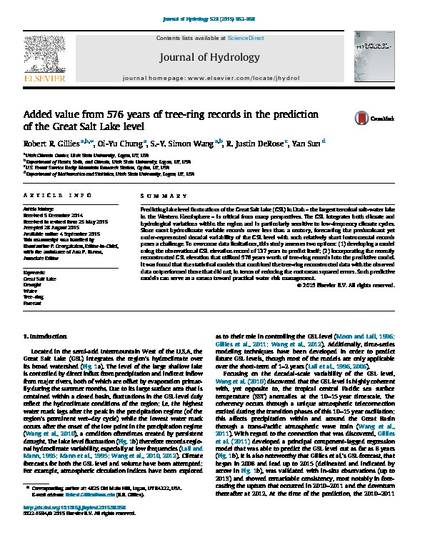
Predicting lake level fluctuations of the Great Salt Lake (GSL) in Utah – the largest terminal salt-water lake in the Western Hemisphere – is critical from many perspectives. The GSL integrates both climate and hydrological variations within the region and is particularly sensitive to low-frequency climate cycles. Since most hydroclimate variable records cover less than a century, forecasting the predominant yet under-represented decadal variability of the GSL level with such relatively short instrumental records poses a challenge. To overcome data limitations, this study assesses two options: (1) developing a model using the observational GSL elevation record of 137 years to predict itself; (2) incorporating the recently reconstructed GSL elevation that utilized 576 years worth of tree-ring records into the predictive model. It was found that the statistical models that combined the tree-ring reconstructed data with the observed data outperformed those that did not, in terms of reducing the root mean squared errors. Such predictive models can serve as a means toward practical water risk management.
Available at: http://works.bepress.com/robert-gillies/21/
